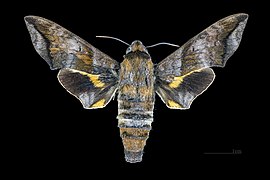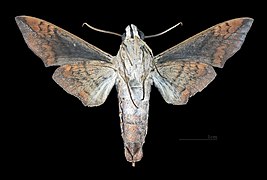|
Perigonia lusca
Perigonia lusca, the half-blind sphinx or coffee sphinx, is a moth of the family Sphingidae. It was first described by Johan Christian Fabricius in 1777. DistributionIt is found from the northern tip of South America, through most of Central America, and up to Florida in the United States.[2] DescriptionThe wingspan is 55–65 mm.
BiologyThere are several generations per year in southern Florida. On the Galápagos Islands, adults are on wing in April and July. In the tropics, adults are probably on wing year round. The larvae have been recorded feeding on Guettarda macrosperma, Guettarda scabra, Coffea species (including Coffea arabica), Ilex krugiana, Ilex paraguariensis, Genipa americana, Rondeletia, Gonzalagunia species (including Gonzalagunia spicata) and Cinchona succirubra. Subspecies and formes
References
External links
|
||||||||||||||||||||||||||||||
Portal di Ensiklopedia Dunia








